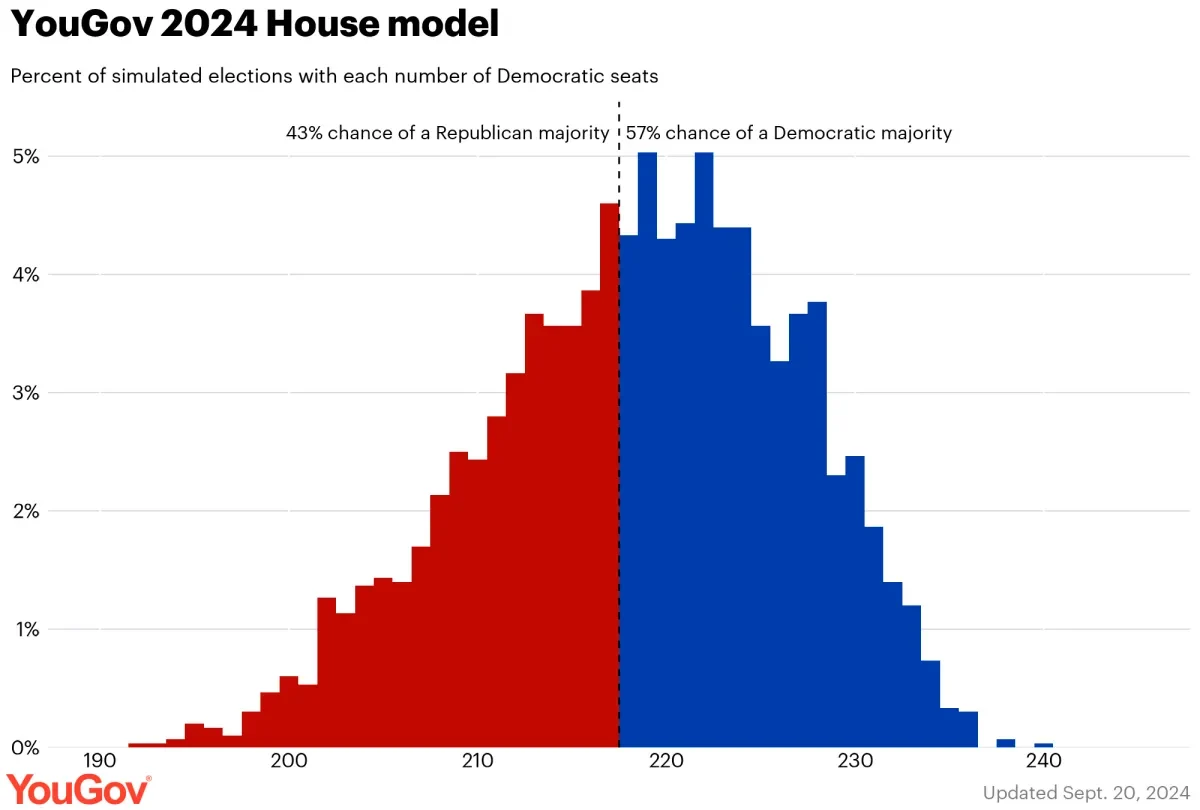This is the first release of YouGov's new model estimating every 2024 U.S. Senate election and U.S. House elections in each congressional district — following our earlier release of a model for the presidential election.
We show Republicans with a slight edge to control the Senate, and Democrats more likely than not to control the House. This would be a reversal from the current Congress, in which Democrats control the Senate and Republicans control the House.
YouGov's Senate model gives Republicans edges in 13 seats on the ballot, and they hold 38 seats not on the ballot, which would give them 51 seats. Democrats or Independents who caucus with Democrats have advantages in 19 seats on the ballot, and they hold 28 seats not on the ballot, for a total of 47. We rate two seats, Arizona and Ohio, as tossups.
Another seven seats remain close: four that lean Republican, and three that lean Democratic.
YouGov simulated each of the 435 House races 3,000 times. In 57% of those simulations, Democrats won a majority of seats — at least 218. In the median simulation, Democrats won 219 seats.

The Senate and House models are based on 95,643 interviews from YouGov’s U.S. panel, conducted between August 23 and September 5, 2024 as part of the SAY24 project, a collaboration between Stanford, Arizona State, and Yale Universities. The methodology for the congressional models is largely the same as that for the recently released presidential model.
The wide range of plausible outcomes for the U.S. House race reflects an environment where YouGov's model projects many House races to be close.
We caution that these models are based upon what people tell us they plan to do. People can change their minds and, if they do, we should see these changes reflected in our model updates. These results reflect our best estimate of the current state of the race.
Image: Getty (Win McNamee)










